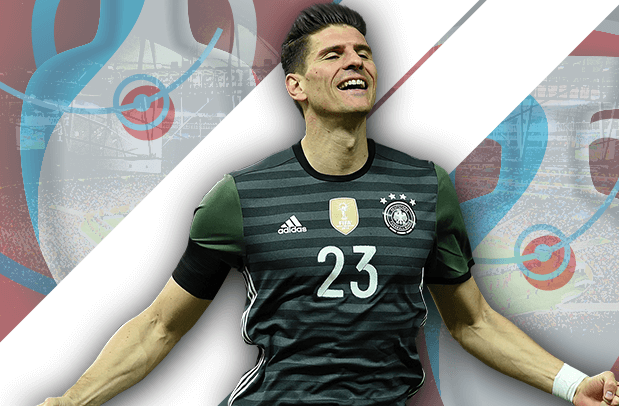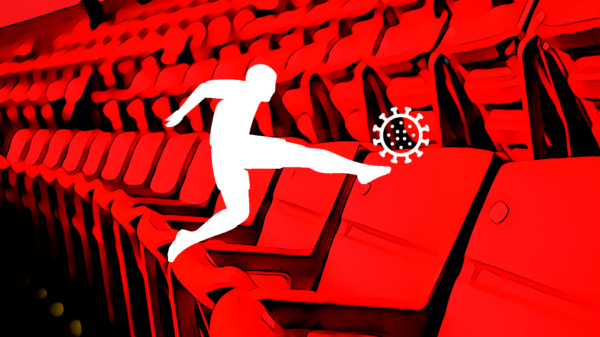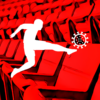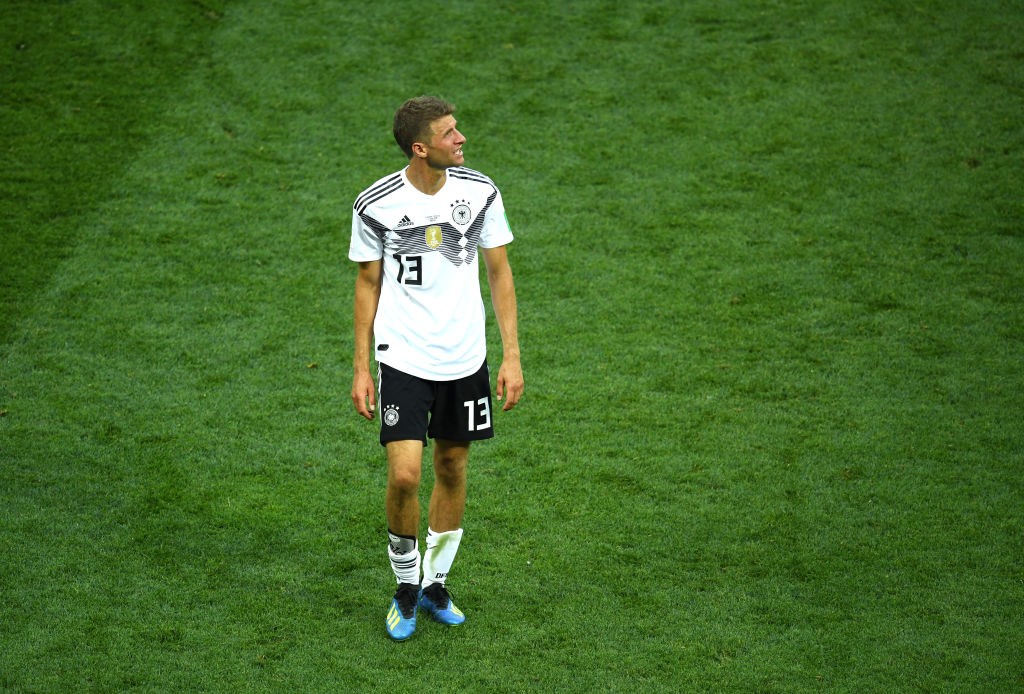Andrew Thompson writes about Germany’s need to stop playing the False 9, and why they need to do so.

On the surface it’s all going well for Germany. Two wins and a draw against a tough Polish outfit saw them top Group C without conceding a single goal, and a date with a tricky Slovakia side beckons in the round of 16. But if you look past all the gloss that has been applied to their campaign thus far, it’s not been as good as some have made it out to be.
Despite topping the group and having one of the best point hauls after the first stage of the tournament, Germany have quite a few weaknesses both in regards to player selection as well as their tactical deployment. Though you’d find very few who would speak against Joachim Low with any great regularity (apart from his hygienic shortcomings), for me personally, their chances of winning their first Euro since 1996 live and die with him, and his faith in the false-nine.
Defending the False-Nine
It’s difficult to find many who wouldn’t agree with the notion that Germany have a lack of true center-forwards these days. Even though Mario Gomez is in the squad, the current world champions can only really look at Thomas Muller and Lukas Podolski as the other options in the squad who could potentially lead the line. With the days of players like Oliver Bierhoff and Miroslav Klose now long gone, on the surface, given the amount of creative players that Germany have, the false-nine seemingly makes sense.
When you’re blessed with an XI that features Mesut Ozil, Toni Kroos, and ball playing center-backs in Jerome Boateng and Mats Hummels, a tactical set up based off possession would be the logical choice. Though Germany do not lack technicians in their side, it’s the willingness of many of their players to want the ball and control the flow of the match that lends further weight to throw support behind the false-nine system, which gives Low the ability to play Mario Gotze in the XI without having to drop Julian Draxler from the left side of the attack, and keeping the option of playing four forward thinking attackers in a system where supposedly they have the freedom of interchangeability.
On the tactics board, this is where the false-nine works. With Draxler and Muller being adept at cutting in from wider areas, and Ozil’s ability to drift away from center when looking for any patch of grass to be creative from, would it not make sense to play Gotze up front to have an additional player who looks to bring others into play while looking for space to be effective from? On paper it sounds too good to be true…and that’s because it is…
Why the False-Nine isn’t working
We’ve laid out the perceived positives, so now it’s time to present the practical findings – it doesn’t work, at least not for Germany.
Briefly consider their 2-0 win over the Ukraine in their opening group stage match. The numbers would suggest a comfortable showing: double the total attempts on goal, triple the amount of shots on frame, 63% possession, 92% passing accuracy, 400 more passes than their opponent – domination or farcical safe haven? The result on paper was a strong one (though it must be said that the Ukraine have been woeful this tournament), but Germany genuinely weren’t as menacing as the numbers suggest.
For all their possession and control of the match, one consideration speaks volumes; the way they scored their goals. Shkodran Mustafi’s opener came by way of a header after a set-piece delivery into the area by Toni Kroos, and Bastian Schweinsteiger’s last-gasp cushion job came on the counter attack after the Ukraine tried to turn the screws to find the equalizer. It’s telling that Germany did not score a single goal from the run of play in the manner in which they sought out to, via possession and control.
Fast-forward from the opener and Germany failed to secure all three points against a Polish side that were happy to sit deep, defend, and play for a draw while hoping to catch them on the break. And in the final group stage match, a 1-0 win over surprise knockout stage lottery winners Northern Ireland (though it really should have a much larger goal margin), which we will come back to later.
The moral of the story here is, for all their willingness to control a match, Germany have only scored three goals in the group stage (compared to the likes of Hungary and Wales who have found the back of the net on six occasions), and none of them came from the run of play with the utilization of a false-nine. So why doesn’t it work? Because Germany insist on playing only one brand of football in such a system.
There is a difference between slow and methodical build up play, and a team who like to possess the ball but can switch gears when the time is right and play direct, incisive football. Germany have quite a few players capable of the latter, but their insistence of always keeping hold of the ball is severely hampering their effectiveness in the final third, especially with a false-nine.
I mentioned before the theory that Gotze in that role makes Germany more mobile going forward, but the nature of their build-up play is such that they give far too much time for their opponent to track back and re-establish their defensive shape – you see Arsenal struggle in the final third often for the same reasons. Additionally, because Gotze by nature is a creative player and not an instinctual player in the attacking third, thus preferring to roam on the edge of the area instead of make penetrating runs into it, only 12 of Germany’s 675 passes against Ukraine actually connected in the box, while only connecting 17 in the box out of 611 against Poland. With poor movement by the forward line and a lack of real penetration, Germany struggled greatly in their first two matches to utilize their attacking talent effectively enough.
The hidden danger of possession with a False-Nine
Lack of penetrative attacking movement aside, another issue with Germany’s tactical deployment in its first two matches is how potentially exposed they are at the back. Naturally, when in possession, players always want to get on the ball and make themselves available, and that includes left-back Jonas Hector. His play has been quite strong throughout the group stage, but the issue of him joining in possession and getting down the touchline seemingly every attack is a potential crisis point for Germany against stronger opposition, namely the upcoming date with Slovakia.
Though the Cologne defender is adept at providing an outlet down the left which includes quality service into the area, it’s this same outlet that leaves Die Mannschaft exposed down their left-hand side to any side that can hit them on the break if possession in the attacking third is lost, which is something that Poland in particular tried to target in their 0-0 draw on match-day two.
Poland’s right-sided combination of Jakob Blaszczykowski and Lukas Piszczek had a large portion of their passes and touches down the right flank, and even Robert Lewandowski and Arkadiusz Milik identified space down the right and shifted there in a bid to exploit it. The reason why this can be traced to the shortcomings of using a false-nine is because without a bigger, stronger and more traditional center-forward, Germany lack the ability to play a long ball forward that can be held up or headed on to another player, and have to rely solely on possession to get forward, and a large part of that has been through Hector down the left flank, with over half of his combined 187 touches against the Ukraine and Poland coming in the opposition half of the pitch.
In short, the utilization of a false-nine puts even further limitations on the Germans ability to attack, when they’re already limiting themselves by insisting on using methodical build up play.
Germany with Mario Gomez at Center-Forward
In a word, this decision against Northern Ireland was an instant upgrade – a traditional center-forward leading the line – and the evidence after his performance guaranteed selection as justified. Never mind the fact that Gomez netted the only goal of the match, but it was how well others played around him and off of him that makes this option the correct and only one that should be considered.
Germany completed double the amount of connected passes in the box than in their two previous matches (33), which indicated better opportunities being made available in the final third, but it was the performance of Muller playing off of Gomez that put the argument beyond dispute. Against the Ukraine and Poland, Muller genuinely struggled to put in the types of performances that we all know he is capable of, those intelligent runs into space and predatory instincts in the box that make him one of Europe’s deadliest forwards, but against Northern Ireland, despite how deep they defended, the holdup play and central focal point created by the inclusion of Gomez allowed Muller to finally have a forward he could effectively play off of to his strengths.
His assist on the Gomez goal highlighted their collective understanding of space and understanding of movement on and off the ball, and Muller himself struck woodwork twice in the match where he genuinely had four of five strong chances to open his Euro 2016 account. All in all, the 1-0 margin at fulltime did not do their performance justice, as keeper Michael McGovern stood tall all evening, but the amount of real quality chances that the Germans were carving out was much improved.
Much in the way that it is wise to have a midfield focal point/pivot to base your play in the center of the park around, the same holds true for having that same type of central figure in the attacking third – someone for others to make runs off of, or a player that Kroos can pick a ball to as to bypass the midfield and change the attacking tempo if necessary. Gomez playing in his traditional role offers more balance and a clearer approach.
Moving Forward
There is no golden rule that you have to shape your team in order to fit all of your best players in the same XI. There can be a case made that, from an overall standpoint, that Mario Gotze is a better player than Mario Gomez, but the reality of the matter is that one is a center-forward, while the other is a creative midfielder…one of them should be leading the line, and the other has no business being anywhere near that position.
Despite the sentiments felt for Gotze given his winner in the 113th minute against Argentina in the World Cup two summers prior, and Low’s faith in the player given the talent that he does possess, this is no time for the German headmaster to continue to put faith in a player who has been deployed in a role that not only is he not suited for, but produces far reaching negative consequences for the team on a tactical level.
Given the realization that Germany have been placed in the “bracket of death”, with potential rendezvous’ with Italy, Spain, France or even England down the road should they get past Slovakia in the round of 16, Joachim Low must look at the performance of his team against Northern Ireland and come to the obvious conclusion that it’s time to put faith in the right players, or else he risks being Germany’s saboteur-in-chief.
Written by Andrew Thompson.
- 20 Key Young Players to Watch from 20 Premier League Teams - August 10, 2018
- World Cup 2018: Germany Warning Signs - June 20, 2018
- MLS 2017: Top 5 U-22 Players of the Season - December 6, 2017
























































